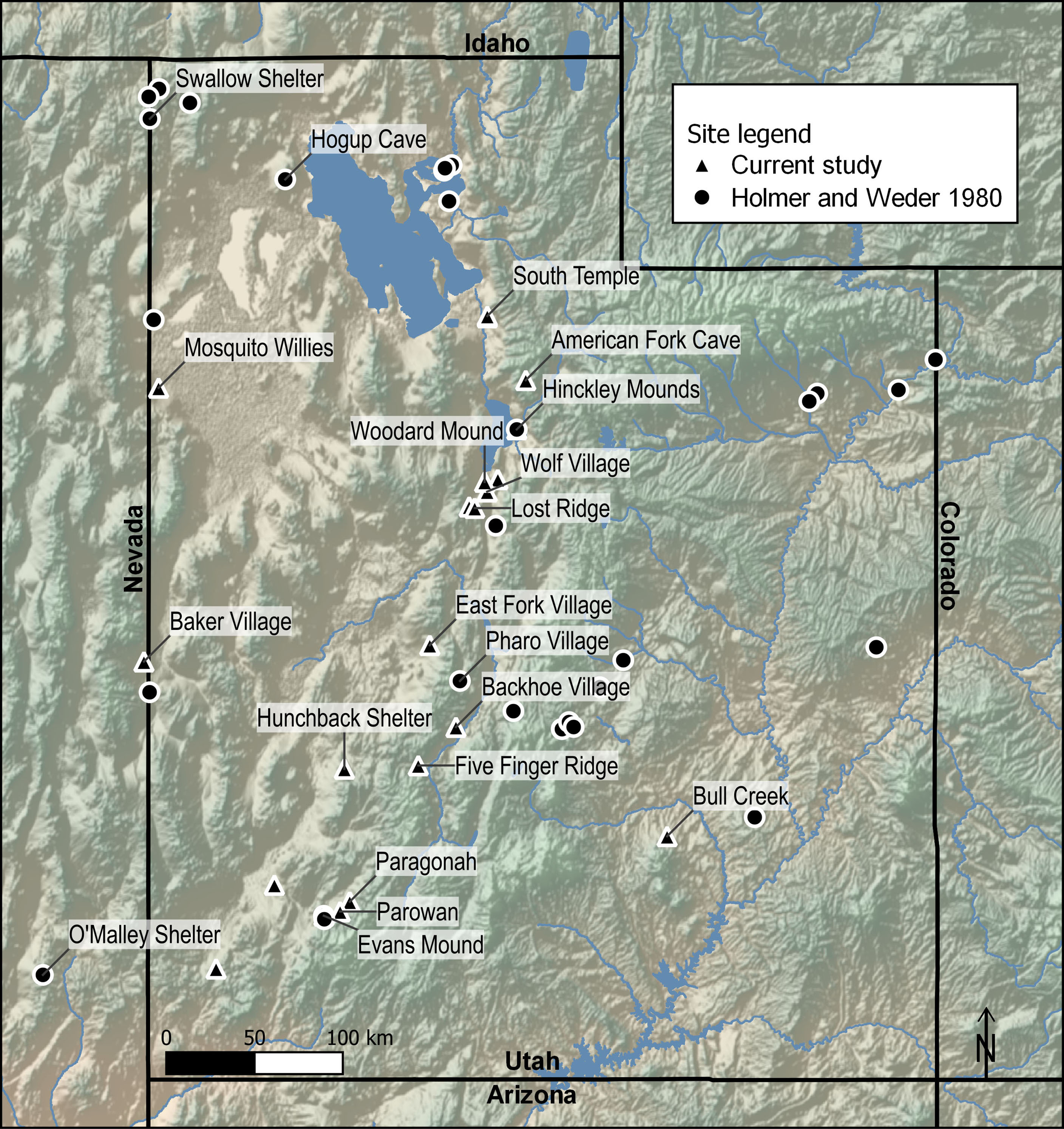Rosegate Projectile Points
The standard projectile point typology for the Fremont region was developed by Holmer and Weder in 1980. Some of the dates were slightly modified by Holmer (1986)— Rosegate points are extended to AD 1000 from the AD 900 date given in the original Holmer and Weder publication. One argument for differentiating the types is that, according to Holmer and Weder (1980:60), Eastgate points are only found in the Great Basin, while the distribution of Rose Spring points is more widespread, but they had few examples of Eastgate points to work with. Justice (2002a:333–336) notes a wider distribution of Eastgate points than Holmer and Weder do, but much of the Fremont region is still not included (Figure 2). Some archaeologists use Rose Spring and Eastgate as initially defined by Holmer and Weder, while others use a hybrid approach with three categories: Rose Spring, Eastgate, and Rosegate. The latter term is reserved for ambiguous points that clearly belong to the Eastgate/Rose Spring morphological continuum but are difficult to classify definitively as one or the other.

Figure 2: Distribution of Eastgate and Rose Spring points based on Justice (2002:Maps 34–35; spatial data for projectile points obtained from Buchanan et al. 2019) .
Rose Spring points were initially defined at the Rose Spring site in California by Lanning (1963) and are distributed throughout the Great Basin, Colorado Plateau, and surrounding areas (see Justice 2002a:320–330). They are corner-notched and are typically long and slender. Eastgate points were defined from excavations at Wagon Jack Shelter in Nevada by Heizer and Baumhoff (1961) and are generally restricted to the Great Basin. They have deep parallel notches in the base that create barbs extending from the blade. Holmer (1986:107, Figure 16) assigns Rosegate points to the period between AD 300 and 900-1000. This contrasts with the central and western Great Basin where these points are known to date up to AD 1300 or later (Garfinkel 2007; Smith et al. 2013; Thomas 1981:19). Hildebrandt and colleagues (2016:88) add that Rosegate temporal spans vary regionally, which suggests the results of this analysis focused on the Fremont region should not be used elsewhere. Recognizing the proposed temporal differences for Rosegate points in the eastern Great Basin, Holmer (1986:107) cites the western edge of the Fremont as a boundary for Rosegate points after AD 900-1000. He does note that this is not an absolute chronological boundary, as some Rosegate points were found in Evans Mound, which dates after AD 1000. Holmer (1986:107) and Holmer and Weder (1980:60) state that Rosegate points were replaced by a variety of later Fremont point types including side-notched, basal-notched, and concave-based points. These later points are commonly found until the end of the Fremont, ca. AD 1300, when they were replaced by Desert series points.